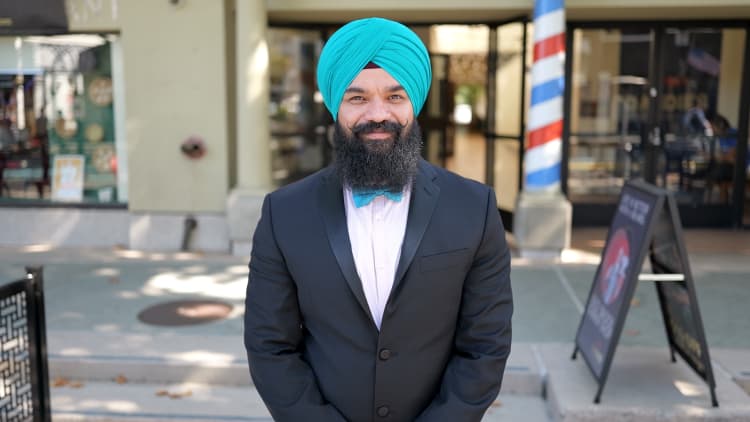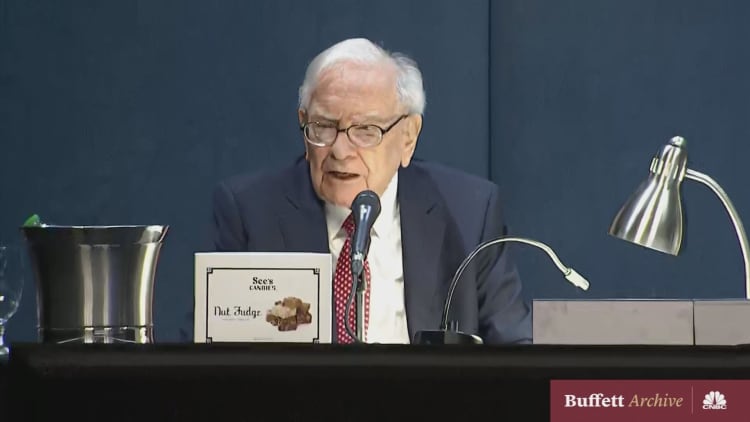How my clothing resale business brings in millions a year

When Rick Senko started re-selling used items on eBay, he was “flat broke” — a recently unemployed single father who was desperate to earn enough money to support his 5-year-old son.
That was 2008, and the first item he sold — a cell phone he bought for $35 on Craigslist and flipped on eBay for $75 — felt like discovering a “glitch in the Matrix,” says Senko, now 41 and based in Fort Lauderdale, Florida.
Realizing he could turn a tidy profit by flipping used items online, he went all in. He studied brands and sales trends, exploiting market inefficiencies and often working up to 20 hours a day “just going to the flea market, going to the thrift store, making relationships, studying my craft, learning, listing [items] every single day,” he says.
DON’T MISS: The ultimate guide to using AI to communicate better
What started as a way to make ends meet slowly grew into a reselling empire, bringing in millions of dollars a year in sales as one of eBay’s top sellers. In 2023, Senko started a wholesale business called Technsports that sells up to 5,000 items of used clothing per day to other professional resellers. Technsports brought in more than $6.5 million in 2024 revenue, according to documents reviewed by CNBC Make It.
Technsports is profitable overall, with a profit margin of roughly 50% per item sold, Senko says.
“I have not taken a day off in almost 20 years,” says Senko. “It is not lost on me how fortunate I am. But it also took a tremendous amount of work, a tremendous amount of commitment, and a tremendous amount of sacrifice to get from where I came from to now selling millions of dollars per year and living a very, very fortunate life.”
‘You don’t need a lot of money to start’
After becoming a father at age 18, Senko worked as a CVS photography lab supervisor for five years to make ends meet for himself and his son. He attended a vocational school to earn a computer repair certificate, which landed him a better-paying job at Circuit City in Fall 2008.
Two weeks later, Circuit City filed for Chapter 11 bankruptcy protection. Senko found himself out of work and unable to find a new job during the Great Recession. Then, his cellphone broke. “I didn’t have a lot of money, so I went onto eBay to get a pre-owned [phone],” says Senko.
He saw one on eBay listed for $75, and then spotted the same model of phone on Craigslist for $35. It was a “lightbulb moment” that seemed too good to be true, he says: “I would double the money. I would get a phone for free, and then I would get my original $35 back.”
Senko bought the Craigslist phone and sold it on eBay for $70, he says. He used the profits to buy another phone on Craigslist, which he flipped on eBay to double his money again. “I’ve been doing that ever since, for almost 20 years. Rinse and repeat,” says Senko, adding: “You don’t need a lot of money to start. You don’t need a lot of knowledge to start. You just need to start.”
He initially focused on electronics — from phones to video games, broken or functional, any low-priced item that he could resell within days, he says. As he learned more about which items sold better than others — and where to find in-demand stock — his earnings grew considerably, topping $100,000 in 2010, he says.
Around that time, he began shifting his focus to pre-owned clothing, which requires far less “customer support,” he says. “A T-shirt is not going to break in the mail.” Clothing required a level of research that Senko was willing to do, he notes: While most people understand that electronics can be valuable, “not everybody knows a particular Polo Ralph Lauren shirt could be worth more [than a gaming console] … Oftentimes those [clothes] are discarded in a pile on the floor at the flea market.”
Senko started leaving home before dawn and spending most of each day picking through piles of used clothing at South Florida thrift shops, consignment shops, flea markets and garage sales, he says. Reselling gave him freedom and control over his schedule, and tapped into his competitive desire to win at all costs, he adds.
‘I get after it every single day’
Over time, Senko built relationships with sellers at flea markets and thrift stores to ensure he got the first crack at picking through new stock. He listed and sold roughly 250 items per day, or tens of thousands of products each year, and hired up to five contract employees at a time to help him photograph items, list them online and handle shipping.
In 2023, he brought in more than $2.5 million in eBay sales, documents show — up from $500,000 in 2017. But he had a feeling that he’d hit a ceiling of how many items he could list and sell per day, he says.
So, that same year, Senko decided to switch up his business model. Rather than buying select pieces and selling them each individually online, he began buying clothes in bulk and selling them wholesale to other resellers willing to spend time carefully sifting through each batch. Clients sometimes buy up to 1,000 items per week, he says.
“They process it, they fulfill it and they sell it one at a time on eBay,” Senko explains, adding: “The most valuable asset for my business became the inventory. I’m more profitable selling more items at a smaller margin.”
The lesser time commitment also helped Senko fulfill a promise to his wife, who he met during his brief time at Circuit City, he says: that they’d work as hard as they could until his son graduated high school, and then pursue an early retirement. “[We wanted to] be able to take a 50-year vacation,” says Senko.
He and his wife finally took time off last year to travel the country, visiting places like New York, California and Las Vegas. “We are starting to enjoy the fruits of the labor,” he says. But he’s reluctant to actually retire, he notes: “To say that I am mentally on the 50-year vacation? Not even close.”
Senko says it’s difficult for him to shut off his competitive drive, especially when he knows there is money to be made and that he has the means and expertise to do it. And if he keeps working on Technsports, he could try to ensure that his current level of financial stability lasts for the rest of his life, he says.
“I get after it every single day. Because when you unlock [that] ability to multiply money, to take $5, put it onto eBay and sell something and get $25 back, how in the world can you rest?” he says. “Did I work a lot? Absolutely … I needed to grow the business. And, ultimately, I needed to be the best.”
Want to level up your AI skills? Sign up for Smarter by CNBC Make It’s new online course, How To Use AI To Communicate Better At Work. Get specific prompts to optimize emails, memos and presentations for tone, context and audience. Sign up today with coupon code EARLYBIRD for an introductory discount of 20% off. Offer valid Oct. 21 through Oct. 28, 2025.
Plus, sign up for CNBC Make It’s newsletter to get tips and tricks for success at work, with money and in life, and request to join our exclusive community on LinkedIn to connect with experts and peers.

<





